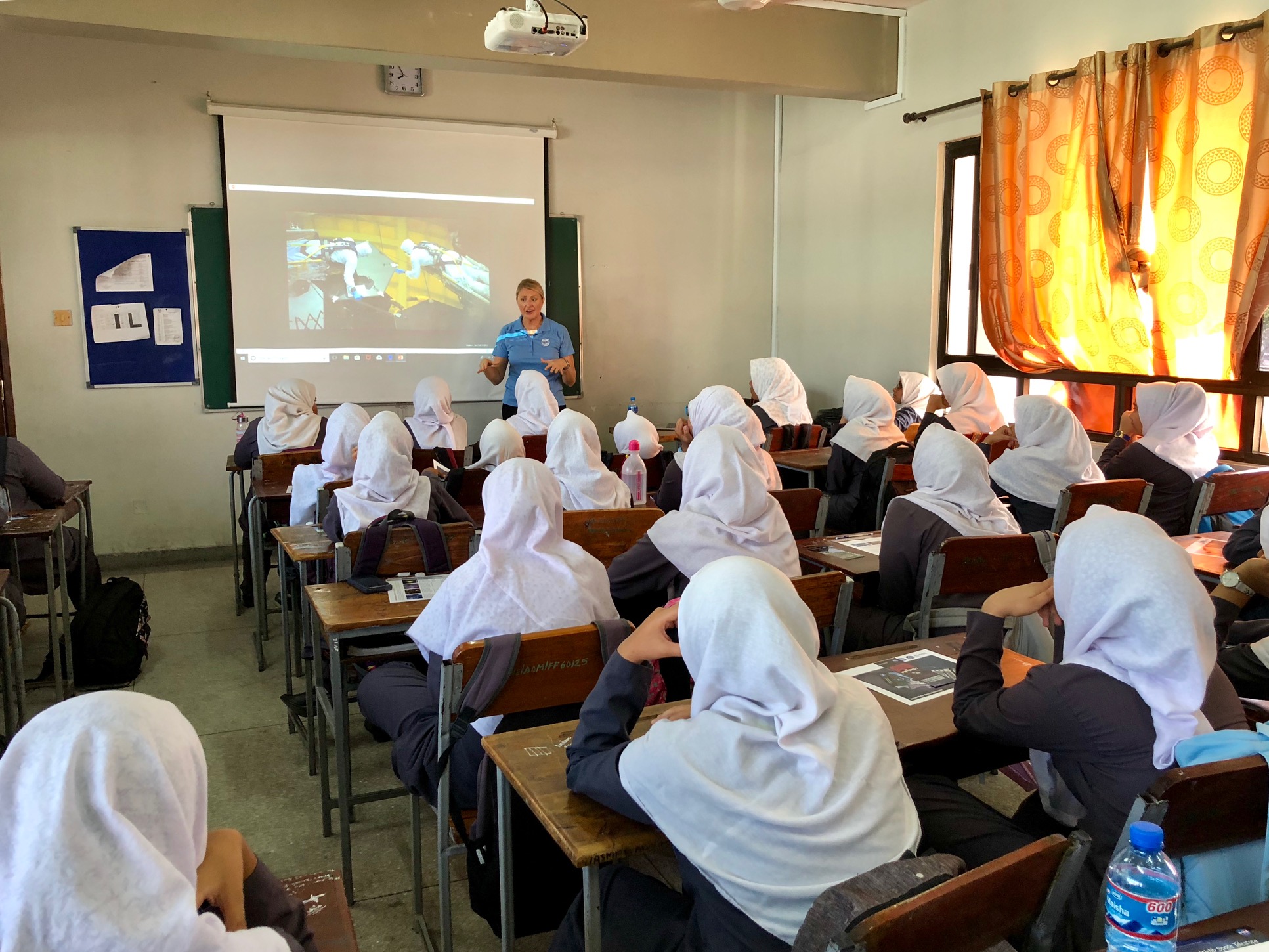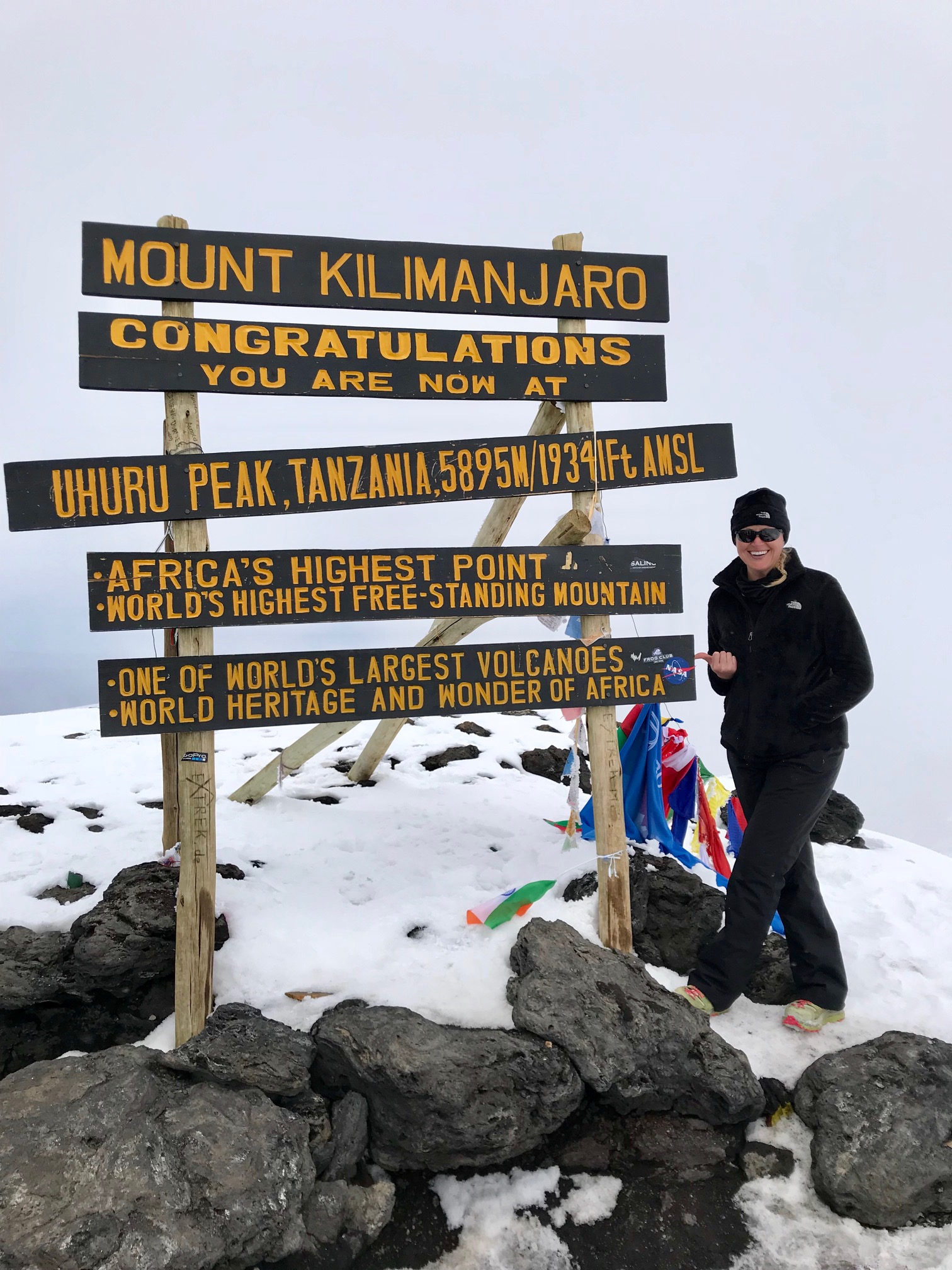Name: Jody Davis
Title: Deputy Payload Systems Engineer for the Wide Field Infrared Survey Telescope (WFIRST)
Formal Job Classification: Aerospace engineer
Organization: Code 592, Instrument and Payload Systems Engineering Branch
What do you do and what is most interesting about your role here at Goddard? How do you help support Goddard’s mission?
I am the deputy payload systems engineer for WFIRST, a deep space observatory scheduled to launch in the mid-2020s that will orbit 1 million miles away from Earth and characterize dark energy and exoplanets.
WFIRST is all about teamwork. The WFIRST payload is a collaborative effort between Goddard, private industry and other NASA centers.
The WFIRST payload consists of the wide field instrument, the coronagraph technology demonstration, the instrument carrier and the actual telescope. The WFIRST observatory is the payload plus the spacecraft, which Goddard is building.
What is the role of a deputy payload systems engineer?
I am responsible for supporting the design, development, build and test of the payload. I am with the project through the entire life cycle. I get to see how the project changes and matures.
I spend a lot of time meeting with our WFIRST partners, our Goddard WFIRST scientists and engineers, and others going over requirements, design trades, and interfaces. Some interfaces are especially critical, such as the optical alignment of the instrument to the telescope. I help ensure that everyone understands and agrees concerning all critical interfaces.
Any payload build requires some design flexibility while still meeting the requirements. Some aspects of the design may change, but the top level requirements should stay the same.
It is all about trading and balancing. Our overall goal is to design it, build it, test it and then verify that we built the thing we designed before we launch it. Testing is absolutely critical, hands down.
Credit: NASA Goddard Space Flight Center
What goes through your mind during flight hardware testing?
Before WFIRST, I worked on the James Webb Space Telescope testing at Goddard, which was also a critical, collaborative effort. We followed a rigorous testing process. We worked late nights, on two shifts. It was exciting and scary at the same time. We knew we built the flight hardware to be tested. However, at the same time, it was still something that had never been tested before. If successful, which we were, then we built something ground breaking.
Some of my colleagues with children have described the overall feeling of testing and launching flight hardware, which took several years to build, as similar to raising a child and sending him or her off to college. You know it is the next good step for your child, but it is still bittersweet and a little scary.
How do you remain flexible while always balancing technical needs among various collaborators?
I approach things with a continuously open mind. I know that I am not the only person in the room who might have the answer. It is important to me that we consider the opinions of the experts associated with all the different parts of the observatory. I rely on the subject matter expertise of everyone in the room.
My overall role is to listen to everyone and then organize everyone’s expertise to come up with the best technical solution overall for the observatory. I always take great care when working with experts who may not always agree. It is a delicate balance of making the project the best possible, while stopping to acknowledge everyone’s viewpoints but continuing to move forward given our schedule and budget constraints.
Why did you become an engineer?
By the age of about 5, I was already obsessed with outer space and design. I had a telescope and I loved to read books about planets and stars.
My uncle, an architect, and I would visit houses, come home and then I would draw the exterior. Later, as I got a bit older, he taught me how to draw the actual floor plans. He made sure that I included all possible design efficiencies, such as sharing plumbing for different bathrooms. He taught me best practices of design.
At 13, I saw the movie “Apollo 13.” I was then able to combine my love of design and obsession with space into my new life goal: I wanted to work as an aerospace engineer at NASA.
What is your educational background?
I grew up in Minnesota. I got a BS in aerospace engineering from Embry-Riddle Aeronautical University in Prescott, Arizona. I then went to the University of Virginia and earned Master of Science in mechanical and aerospace engineering. While at UVA, I did my master’s research at NASA’s Langley Research Center in Hampton, Virginia, in entry descent and landing for planetary exploration.
What other projects did you work on at Langley? How did you come to Goddard?
After earning my master’s degree, I worked at Langley for 14 years on Cassini-Huygens, Mars Phoenix and then the Mars Science Laboratory. In 2014, I started working on the Webb telescope and commuted between Langley and Goddard.
In 2017, I joined Goddard permanently to work on WFIRST. Shortly after I arrived, I became the deputy payload systems engineer for WFIRST, the perfect follow-on after working on Webb.
What do you enjoy most about your job?
To me, it is the people. When you have a good and capable team, you will have a successful project. When I am looking for a team member for our payload team, I look for good communication skills, someone who plays well with others and has excellent technical capability.
Why did you climb Mt. Kilimanjaro?
In January 2018, I climbed Kilimanjaro with two of my girlfriends, one from NASA’s Johnson Space Center in Houston and the other from NASA Langley. Girl power! We were looking for the next challenge and my girlfriend from NASA Johnson suggested climbing it. We were all in.
The peak is 19,300 feet above sea level. I have been running marathons since 2015, so I made some tweaks for training for climbing. For Kilimanjaro, I trained for a good six months before climbing. I did hill sprints, walking on a treadmill set at the highest incline with a weighted daypack on my back, weight lifting and other strength-building exercises.
Our climbing group had a total of seven people including five women and four main guides with too many sherpas to count. We were in Tanzania a total of two weeks, including a few days before and after our actual climb. We did the eight-day Machame Route. When we summited, I was tired but it was one of the best moments in my life: I was elated!
I really enjoyed getting to know the Tanzania culture. In that brief time, I really loved getting to know the Tanzania people, who were so incredibly welcoming. I thought to myself, “I need to return someday.”
Did you return to Tanzania?
Yes, I returned to do STEM outreach, something I love. In 2018, I went to South Africa to speak at an international women in engineering conference. We focused on African women in technical leadership and the role Africa can play in the global STEM community.
The following week, I went to Tanzania to work with Projekt Inspire, a non-profit in Dar Es Saalam focusing on STEM education. I spent the week with them, visited five schools ranging from kindergarten to high school age students, and told them about NASA and how engineering can play an important role in their local community.
It is incredible how NASA is so global, that so many people knew about NASA and what we do, and how much we inspire the rest of the world. Part of the reason I went was to promote the benefits of STEM education in remote communities. We exposed these children to more engineering tools and skills that they can use to develop themselves and their community.
These children are just brilliant! Many knew details about NASA’s past missions. Everyone was so excited and enthusiastic about space exploration. One young girl approached me and said that if one day Tanzania could go into space, she wanted to be an astronaut.
I hope to return, maybe every other year, to continue this outreach and foster our international relationships. These remarkable children so inspire me!
What is your next mountain to climb? Your next marathon to run?
I’d love to climb Aconcagua in Argentina next. It’s the tallest non-technical climb in the world, with a mountain peak of 22,800 feet. It’s quite a challenge, so we’ll see.
My next marathon will be the Mt. Fuji Marathon in Japan this November. My goal is to run a marathon on each continent before I turn 50, including Antarctica. I’m building up to that one!
Is there something else surprising about you that people do not generally know?
I started flying about the same time I was learning to drive, when I was about 15. I got my pilot’s license when I was 18. The fun part about this story is that I would fly before high school classes started in the morning and after school I worked in a hair salon to make the money to pay for flying lessons.
I am a private pilot who flies a Cessna 172, a single-engine airplane. My favorite airport to fly out of is in Sedona because you take off and land on a plateau. It’s a little stressful, but it’s beautiful!
What is your “six-word memoir”? A six-word memoir describes something in just six words.
She inspired and uplifted the world.
By Elizabeth M. Jarrell
NASA Goddard Space Flight Center





























